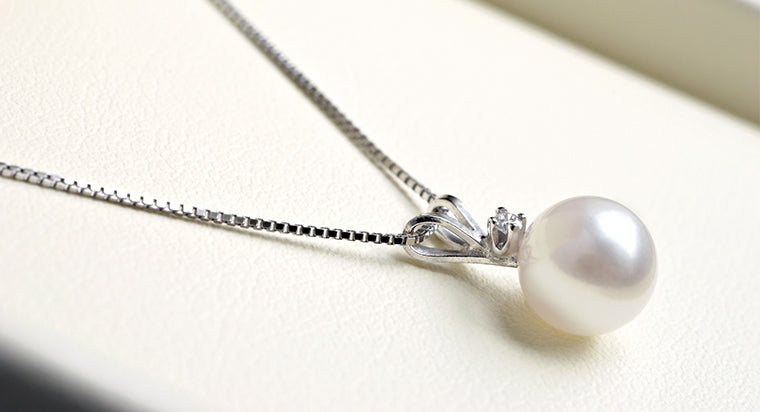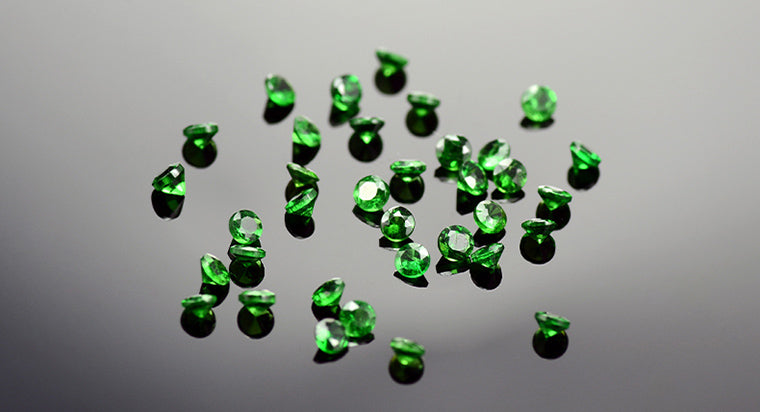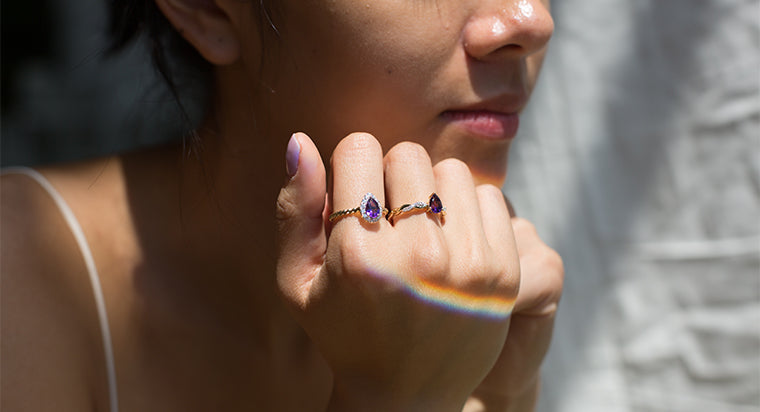Black Diamond Grading
Black diamonds are beautiful gems that can be used in many stunning pieces of jewelry. Black diamonds, or carbonados, are known for their dark, rich color, and can be both natural or lab created. When purchasing a black diamond, it's very important to understand how these gems are graded. Understanding grading helps ensure you are getting the best possible quality gem.
TABLE OF CONTENTS
Important Factors in Black Diamond Grading
Much like other gems, black diamonds are graded based on a variety of factors. If you are purchasing a gemstone from a professional, reputable source, the gems will be graded based on the following criteria: color, cut, and clarity.
Color
One of the most important aspects of a black diamond or any colored gemstone, is color. These gems are known for their unique hue, and selecting a carbonado with a high color grade is essential for purchasing the highest quality stone.
The color of black diamonds is actually due to the high number of inclusions found in the stone. Moreover, these gemstones should be a rich, lustrous, black (sometimes dark green) hue and the tone should be dark throughout the gem. In terms of color, black diamonds are graded on the following single grade term fancy black.
Natural AAAA
Natural AAAA grade gemstones make up less than 1%, and are the epitome of perfection. Gemstones with this grading are extremely rare and expensive. These types of gemstones are museum-collection worthy.
Natural AAA
Natural AAA carbonados are on the higher part of the grading scale. Black diamonds with this rating are evenly hued throughout. Moreover, this grading score is rare, with only 1% of gemstones meet this grading standard.
Natural AA
Natural AA black diamonds are the third highest quality stones in terms of color grading. This grading bracket represents the top 10% of gemstones, making them great choices for fine jewelry pieces.
Natural A
Though the color quality of Natural A gems is not as impressive as some stones, gems that receive this grade still represent the top 20% of gems worldwide, meaning they can still be practical choices for jewelry.
Natural B
Black diamonds that are categorized as Natural B on the grading scale are not as coveted as those with higher ratings and represent about 50% of gems worldwide.
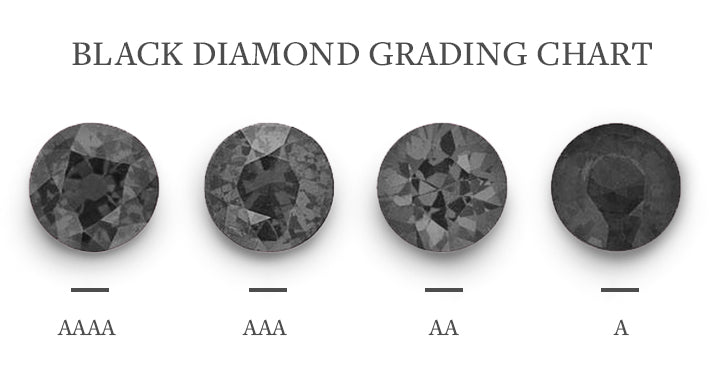
Clarity
Inclusions
The grade black diamonds receive for their clarity is based on the amount and variety of inclusions found within the stone. Although inclusions are what give carbonados their unique look, some inclusions are undesirable and reduce the value and structure of the gem. Below are the most common kinds of inclusions found for these dark gems:
Pinpoint
The name pinpoint accurately describes this type of inclusion, which are small black dots within a diamond that work to contribute to the overall color of the gem.

Natural inclusions
Are left at the corner girdles of the diamond after it has been cut, and some jewelers purposely leave them to show they didn’t cut too much off of the original gem.
Indented Natural
These inclusions are small chips on the gem’s edges and are extremely common.
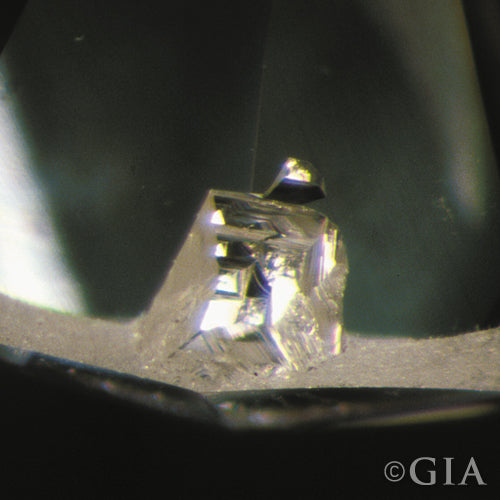
Chip
These inclusions are chips on the surface of the stone and can usually be fixed by a professional jeweler.
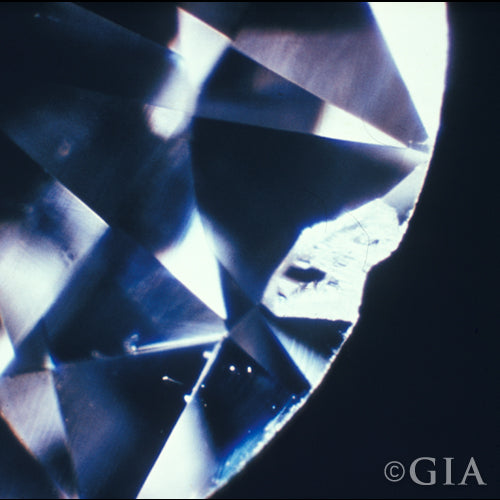
Feather
These inclusions are feather-like cracks on the inside of the stone. These can be damaging since they compromise the internal structure of the stone.

Cavity
Cavities are small holes inside a black diamond. Stones with these inclusions are generally of low quality and should be avoided.
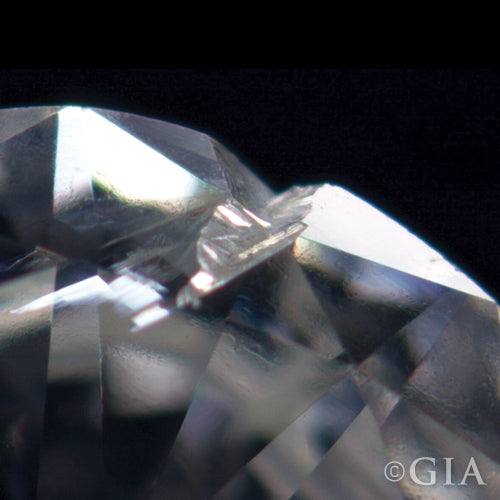
Etch Channel
These inclusions are the result of the black diamond being exposed to high heat and are essentially channels that run throughout the stone.
Black Diamond Clarity Scale
When purchasing a carbonado, you do not need to pay attention to the diamond clarity scale, which runs from Flawless (FL) to Included (I). This scale is not applicable for both natural and lab-created black diamonds because their color is opaque and are usually heavily included. Black diamonds on the market were either heavily included white diamonds that got treated to turn black, or they were found in nature with plenty of graphite inclusions.
How to Choose the Grade
When purchasing a black diamond it’s important to take into account all of the grading factors listed above.
Black diamonds with a flawless clarity grade and a Natural AAAA rating represent the highest quality gem but are often too rare and too expensive. Selecting black diamonds that are slightly lower on the black diamond grading scale, such as those which receive Natural AAA-AA color ratings can provide a great balance of value and quality.
FAQs
How is a black diamond graded?
Black diamonds are graded based on their color intensity, overall appearance, and the presence of any visible inclusions or impurities. The Gemological Institute of America (GIA) does not currently grade black diamonds in the same way that it grades colorless diamonds, as the color of black diamonds is not considered a characteristic that can be graded. Instead, black diamonds are often evaluated based on the degree to which they are opaque, with more opaque stones being considered of higher quality. The GIA also notes that the presence of any visible inclusions or impurities can also affect the overall appearance of a black diamond.
What is an irradiated black diamond?
An irradiated black diamond is a diamond that has been treated with ionizing radiation, usually gamma rays, to change its color from its natural color (usually a yellowish or brownish color) to black. This treatment is permanent and stable, and it does not affect the diamond's structural or optical properties. Irradiated black diamonds are used in jewelry and are considered to be a more affordable alternative to natural black diamonds.
How to assess the value of a black diamond?
The value of this gem is assessed using the 4 Cs: carat weight, cut, clarity, and color.
Carat weight: This refers to the diamond's size, and it is the most straightforward factor to determine. A larger diamond will be more valuable than a smaller one.
Cut: The cut of a diamond refers to how well it has been cut and shaped. A well-cut diamond will reflect light better, which can make it appear more sparkling and valuable.
Clarity: This refers to the presence of any internal or external flaws in the diamond. A diamond with fewer flaws will be more valuable.
Color: This is the most important factor when assessing the value of a black diamond. The color should be even, with no visible inclusions.
In addition to the 4 Cs, other factors that can affect the value of a black diamond include its origin and the method used to create its color. Natural black diamonds are extremely rare and, therefore more valuable than irradiated or treated ones.

